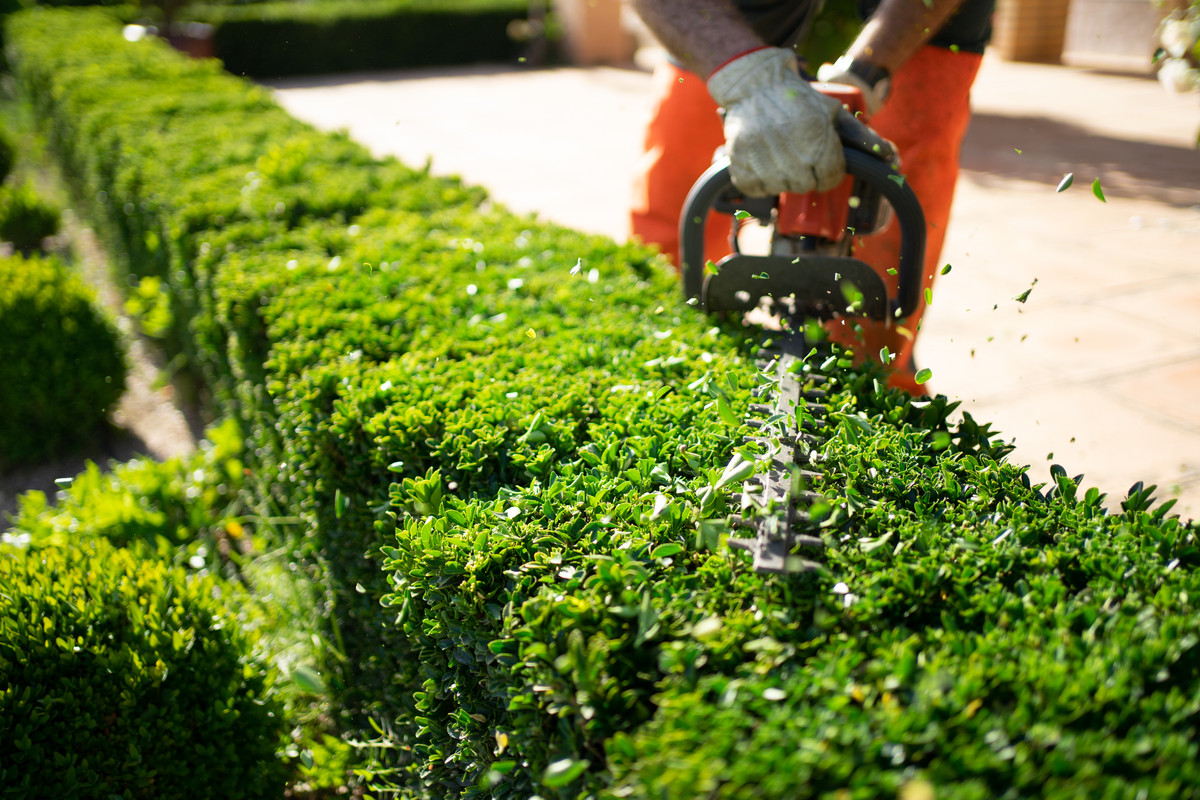Landscaping
by siteadmin

Landscaping involves the modification of land's visible features. This process is based on several factors, including cost and job duties. In addition, it can change the appearance of the surrounding environment, including the appearance of buildings and fences. Here are some general rules of landscaping. Listed below are some important factors to consider when hiring a landscaping company. The cost and job duties will help you choose the best landscaping company for your needs.
Costs
The cost of landscaping a yard will vary depending on its size and location. The farther away the property is from a city, the lower the cost of landscaping. Additional costs can be added to the project when patios, water features, and other custom-made structures are added. Additionally, some plants and accessories cost more than others. In addition, many homeowners only consider the cost of the plants and materials, not considering the increase in their water bills.
Landscaping per acre can range from $2,000 to $4,000 and depend on the amount of space you have. Landscaping costs per acre are higher than those for smaller areas, and you should consider this when determining the cost of landscaping. For example, if you need a lawn mowed once a week, you may need to spend an extra $200 per visit. In addition, larger lawns can cost twice as much to maintain.
Landscape design can also vary in price. Whether you're creating a garden or a pond, the price will vary accordingly. Water features are typically the most expensive feature and can cost up to $8000 per square metre. Larger ponds will cost you more than smaller ones. For those who have a small budget, a three-foot by five-foot pond will cost about $3500. You'll need to calculate the size of the pond you want and decide if it's necessary.
Job Duties
In addition to planting flowers and shrubs, landscaping technicians also maintain the grounds and apply fertilizer, pesticides, and water. They plan and design landscapes and maintain irrigation systems, aerate the ground, and remove fallen leaves and debris. Groundskeepers also use hand tools and powered equipment to perform a variety of tasks, including moving potted plants, digging trenches, and cultivating grass and flowers. In addition, groundskeepers must advise customers on proper plant care.
Landscape workers must be physically fit to perform their job duties. They must be able to lift heavy objects and enjoy working outdoors. They may be working near powered equipment and machinery, but must also exercise caution in order to avoid exposing themselves to harmful chemicals and irritants. The job may also require wearing ear protection, since the environment is often noisy, especially when working outdoors. Additionally, they should be able to use hand tools such as rakes and shovels to perform their job.
Job duties in landscaping vary from one employer to another. Landscapers generally work for a landscaping company or local government, using their knowledge of horticulture and aesthetic sense to plan and maintain outdoor areas. In addition to overseeing landscaping projects, landscapers often perform general upkeep tasks, including mowing lawns and administering pesticides. However, this position does not require a college degree. However, a landscaper's education should reflect the persona they seek to hire.
Colors
While you're designing your landscape, consider what moods you want to convey. Red usually suggests excitement, while blue conveys calmness. For inspiration, review this infographic for colors that go well together. Also, consider what kinds of plants will grow well with your chosen color scheme. In general, light-colored plants are best suited for sunny environments, while darker ones are best suited for shaded settings. But be careful to use colors that clash in an unusual way.
There are a variety of colors you can use to achieve a calm and soothing atmosphere. You can mix and match colors without achieving extreme contrast, such as blue and green. A warm-toned landscape can be created with white pebbles. Alternatively, a cool-colored garden can be created with decorative river rocks. These materials also provide a more traditional look. To avoid clashing and creating a clash, choose colors that go well together and enhance their complementary properties.
To choose colors that complement each other, consider taking color cues from neighboring yards. For example, a green yard may look great next to a dark-brown house. Try using different hues in the same area to create an overall theme. And if you're unsure of which color combination would go best with your house, you can use computer software to experiment with different color combinations. You'll have a much easier time choosing colors if you know your color schemes.
Plants
Different plants require different care and susceptibility to environmental stress and pests. Native plants are better suited for specific climates and regions, and require less supplemental care. However, if you're a beginner and want to add some color to your yard, consider planting one of these top-performing plants. These plants can fit seamlessly into most landscapes. Listed below are a few of the top-performing plants for landscaping.
Decide what kind of light your yard gets every day. Plants that receive more sunlight than those that receive less light are best. However, you need to keep in mind that some plants require winter dormancy and are not tolerant of freezing temperatures. Additionally, different plants need different amounts of water in different seasons. If you live in an area that experiences freezing temperatures or high humidity, you should consider a plant that will thrive in a colder climate.
Determine the climate zone of your garden. Most plants grow much larger in the ground, so it's best to choose plants that can thrive in your area. You'll also want to know what kind of soil you have. Most plants grow well in neutral soil, but some prefer acidic or alkaline conditions. You should also consider the size of your yard before buying plants. If you're unsure about your gardening zone, it's best to ask a gardener for help.
Hardscapes
Hardscapes are an excellent way to tie the exterior of your home into the landscape of your yard. They not only enhance the look of your property, but also make it more usable and increase its value. From benches to fire pits, these hardscapes can improve the look of your yard and make it a more appealing place to spend time. Here are some tips to help you choose the best hardscapes for your home.
Bricks and other traditional hardscape materials are popular choices for landscaping. They are easy to install and complement a wide range of design needs. Moreover, they require little maintenance and don't fade with time. Another prominent choice for hardscapes is concrete. It has a modern industrial look, and it is also durable. In addition to using concrete as a hardscape, you can also get it stamped to resemble other materials, such as sandstone or granite.
Creating beautiful hardscapes is easy when you know what you're doing. These features can dramatically increase the functionality of your landscape while also reducing maintenance. Hardscapes can also increase your property's value if properly implemented. You can hire a landscaper to create your dream yard or makeover your current property. Just be sure to choose a company with experience and know-how in hardscape design. And don't forget to have fun!
Styles
Landscape styles differ based on their maintenance requirements and aesthetic appeal. While traditional styles of landscaping require more water and maintenance, cottage-style gardens tend to be more casual and informal. For instance, the Japanese style is known for its formal-looking but informal-looking yard. This style is characterized by dense planting of flowering plants, as well as boulders and other hardscape elements. In addition, this type of landscaping often incorporates self-seeders, cacti, and other plants that spread easily and self-seed.
If you'd like to achieve the look of a traditional landscape park, keep the planting colors muted and choose plants that have light and delicate flowers. Artemisia and other plants with pale colors are a good choice for this type of landscaping, as they offer lower-textural contrast. In addition, you can create the effect of a wilder planting by using clean-lined edges and mowed lawn borders. If you'd like your landscape to reflect nature, try redbuds, which add winter interest to your landscaping. Additionally, they are useful for habitat plants.
Depending on your needs, formal landscaping may be appropriate for your home. Formal gardens typically feature boxwood hedges and clean lines. Sculptures and fountains may also be included. This style generally has a defined structure and symmetrical layout. Avenues, for example, are driveways or pathways lined with trees. Avenues are often seen on large properties. These gardens are typically more elaborate than their informal counterparts. So, if you're thinking of creating a formal garden, consider using some of these styles.
Categories: Landscaping
Tags: landscaping services, landscaping guide, landscape designs, landscaping approaches, landscaping techniques
Landscaping involves the modification of land's visible features. This process is based on several factors, including cost and job duties. In addition, it can change the appearance of the surrounding environment, including the appearance of buildings and fences. Here are some general rules of landscaping. Listed below are some important factors to consider when hiring…
Recent Posts
- Pro Junk Removal Scottsdale Simplifies Waste Management Across Arizona
- Enhance Your Outdoor Living with Southwest Patio’s Premium Awnings and Covers
- Revolutionizing Swimming Pool Construction in San Diego with Natural Rock Designs and Innovative Plunge Pools
- Rooftop Solar Company: Revolutionizing Solar Energy Solutions in Las Vegas
- Unlocking the Potential of Cloud Computing for Cincinnati’s Businesses
